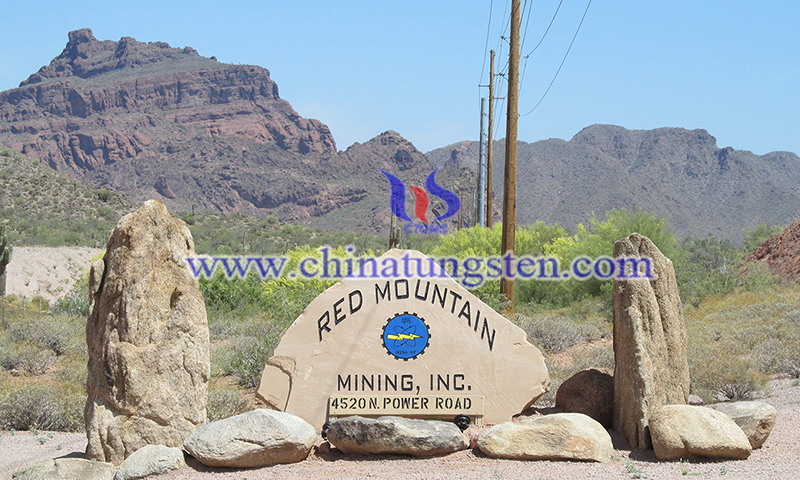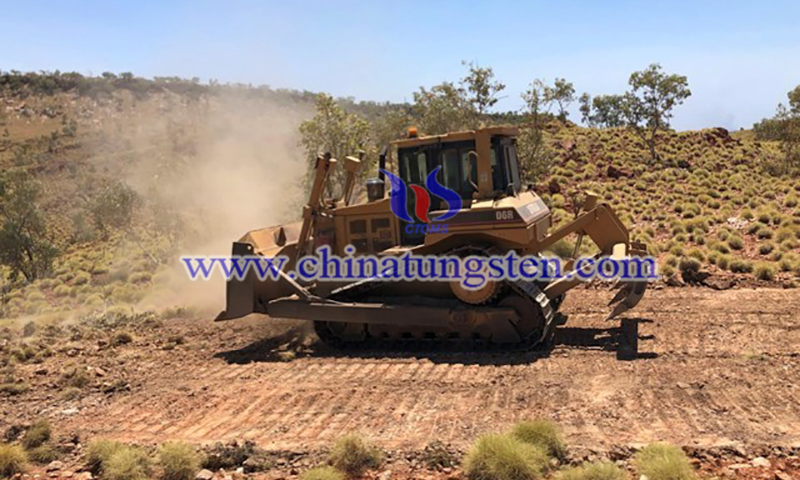Red Mountain Mining Confirms Rare Earth Mineralization at Mt Mansbridge
- Details
- Category: Tungsten's News
- Published on Thursday, 09 December 2021 21:36
Red Mountain Mining, Inc. has discovered rare earth mineralization at its Mt Mansbridge project in the Kimberley region of Western Australia. Rock chip sampling conducted by Red Mountain Mining during the current year at the Solo property confirmed the composition of xenon-dysprosium, including a 6-meter zone associated with silicate structures and hosted in more extensive quartz and quartz-mica tuffs and minor fine-grained gabbro.
Visual observations indicate that yttrium phosphate is present in up to 10% of the total mineral composition of the zone. Field analysis using a portable X-ray fluorometer confirmed that it is anomalous in yttrium and dysprosium. Samples have been prioritized for assaying in the laboratory for processing within two weeks.

Drilling also took place at the Déjà vu prospect, which has potential for cobalt mineralization. first identified by CRAE in the early 1990s, the Déjà vu prospect is a stratified dolomitic-ultramafic intrusion with nickel-copper-cobalt-platinum group element prospects.
The property initially targeted diamond-bearing kimberlite, but it encountered serpentinized peridotite. Scattered sampling and assay results show encouraging cobalt grades between 70 and 100 meters, including 0.34%, 0.32% and 0.22%.
Red Mountain drilled a hole to “twin” CRAE's work and provide further geological information and a set of samples around the existing cobalt anomaly. However, the drill rig encountered mechanical problems and was demobilized to avoid it being put on hold during the rainy season.
The company has plans to drill further and deeper in the new year, with an additional hole to the north and south. Rare earth elements are becoming increasingly popular because of the important role they play in modern technology.

They help develop smaller and faster electronic parts; more powerful magnets (especially in wind turbines); stronger metal alloys; brighter flat-panel TV images; faster chemical reactions; and more efficient fuel cells (for certain types of hybrid cars).
Rare earths are now classified as a key mineral, with China controlling more than 70 percent of the global supply and accounting for 98 percent of production. China recently announced it will severely restrict exports of rare earth elements because of growing environmental problems at its mines, with contaminated waterways and radiation affecting workers and communities.
Global interest in new and sustainable sources of supply for heavy rare earths is on the rise as alternative options are limited. Red Mountain Mining has indicated that its wholly-owned Mansbridge Mt project has the potential to be a strategic asset with the prospect of owning critical and high value heavy rare earths in a large emerging rare earth province.
- Rare Earth Manufacturer & Supplier, Chinatungsten Online: www.chinatungsten.com
- Tungsten News & Prices of China Tungsten Industry Association: www.ctia.com.cn
- Molybdenum News & Price: news.molybdenum.com.cn
- Tel.: 86 592 5129696; Fax: 86 592 5129797; Email: sales@chinatungsten.com